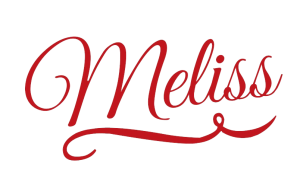 Imagine your brand being so well-known that it becomes a catch-all term for a specific product or service. That’s the kind of brand awareness that companies like Kleenex, Google, and Band-Aid have achieved.
Imagine your brand being so well-known that it becomes a catch-all term for a specific product or service. That’s the kind of brand awareness that companies like Kleenex, Google, and Band-Aid have achieved.
I mean, how often have you heard phrases like these?
“Could you get me a Kleenex, please?”
“Go Google it!”
“Ouch! Do you need a Band-Aid?”
On the opposite end of the spectrum, we have brand slogans that are so well-known, they stand in for the brand names themselves.
Let’s play a quick game: how fast can you name the companies based on their catchphrase or slogan?
~Just Do It.
~I’m lovin’ it.
~Melts in your mouth, not in your hands.
Yeah, those are Nike ✓, McDonald’s ?, and M&Ms ?. What’s amazing about these companies is that they are so well-known we can recognize them from slogans alone. And, let’s be real, these slogans aren’t exceptional by themselves— they require that brand awareness to have the effect they do.
So, what is brand awareness?
It’s the extent to which customers are aware of a brand. Simple, right? How well do your customers know your brand? Are they familiar with your brand values? What about the distinctive qualities that set you apart from other companies with similar products or services?
Brand awareness is what takes a brand from “Who?” ? to “Who else would I choose?” ?
Let’s look at two examples:
Google, which was founded in 1998, and Band-Aid bandages, which began way back in 1920. Both brand names are synonymous with the service or product they provide. Google, a much newer company by all accounts, was able to exponentially increase their brand awareness through innovative marketing techniques. Band-Aid has been around forever, providing quality products and appealing directly to their target market.
Maybe you’re ? at this article. Maybe you’re saying “Sure, Meliss. That sounds great, but we can’t all be Google or Band-Aid!”
Well, I am saying “Why not try?”
Sure, you might not have the type of business that can be scaled to that sort of massive, worldwide level. But there’s no reason why you can’t be the Google of wherever-you’re-from.
You can be the go-to in your industry… And it all starts with brand awareness.
Here are 4 steps you can take to improve your brand awareness.
Be a human ??
Customers don’t want to talk to a brand or an idea, they want to talk to humans. That’s why it’s so important to determine your brand persona. Figure out your unique selling proposition, brand values, the type of personality and voice your brand will use, and how your brand will show up in person and IRL. Then stick to it. Be consistent with your voice and your message so that your customers know what to expect every time they interact with you.
Social-ize ?
Once you know who you are, figure out who your ideal customer is. Then, go where they are. Whether that’s on social media or real-life events— get in front of your customers! If your ideal customer is an Instagram-obsessed #girlmom, then you should post regularly on Instagram, use the same hashtags she’s using, and interact with other accounts she likes. If your ideal customer is a business-savvy LinkedIn user? Grab my free “Finding Your Dream Customer Guide” here.
Yep. You guessed it. Start posting on LinkedIn!
Pay attention to the type of content that your customers are engaging with on these platforms. Do they lean towards emotionally-driven pieces or are they sharing the latest iteration of a popular meme?
Talk the talk ?
Now that you’re on the right platforms, interacting and engaging with your targets, pay close attention to the way they talk, both to you and about you. What sort of language and phrases are they using? What questions are they asking about your brand? What problems do they have that you can solve?
Incorporating this language into your social media posts and your other content, like emails and blog posts, will show your customers that you understand them. Grab “30 Content Ideas To Kill It On Social Media” here.
Tell a story ?
Remember back at step number one, where I told you to be a human? That’s a big thing right here. People connect to relatable narratives, so tell a story! You can go deep and emotional, like American Greetings did with this insanely viral Mother’s Day campaign, hilarious like the time Fruit of the Loom asked men to #PutAShirtOn, or completely unique like the time Ikea encouraged people to pee on their advertisement. Each of these examples are highly relatable, highly shareable content that consumers went crazy for.
The type of content you share, the way you say it, and where you’re sharing it are all determined by the previous steps.
Now, go put this information to work! Even if you don’t have your brand persona completely nailed down, you can start doing market research. Learn where your customers are and start engaging with them there. This can help inform the type of brand you want to be and how you want to show that.
Want to learn how to take these strategies and uplevel your business? Enrollment for my Social Marketing Academy is open! If you join right now, you can get a week-long trial for only $1. Click here to learn how!
All the best,

